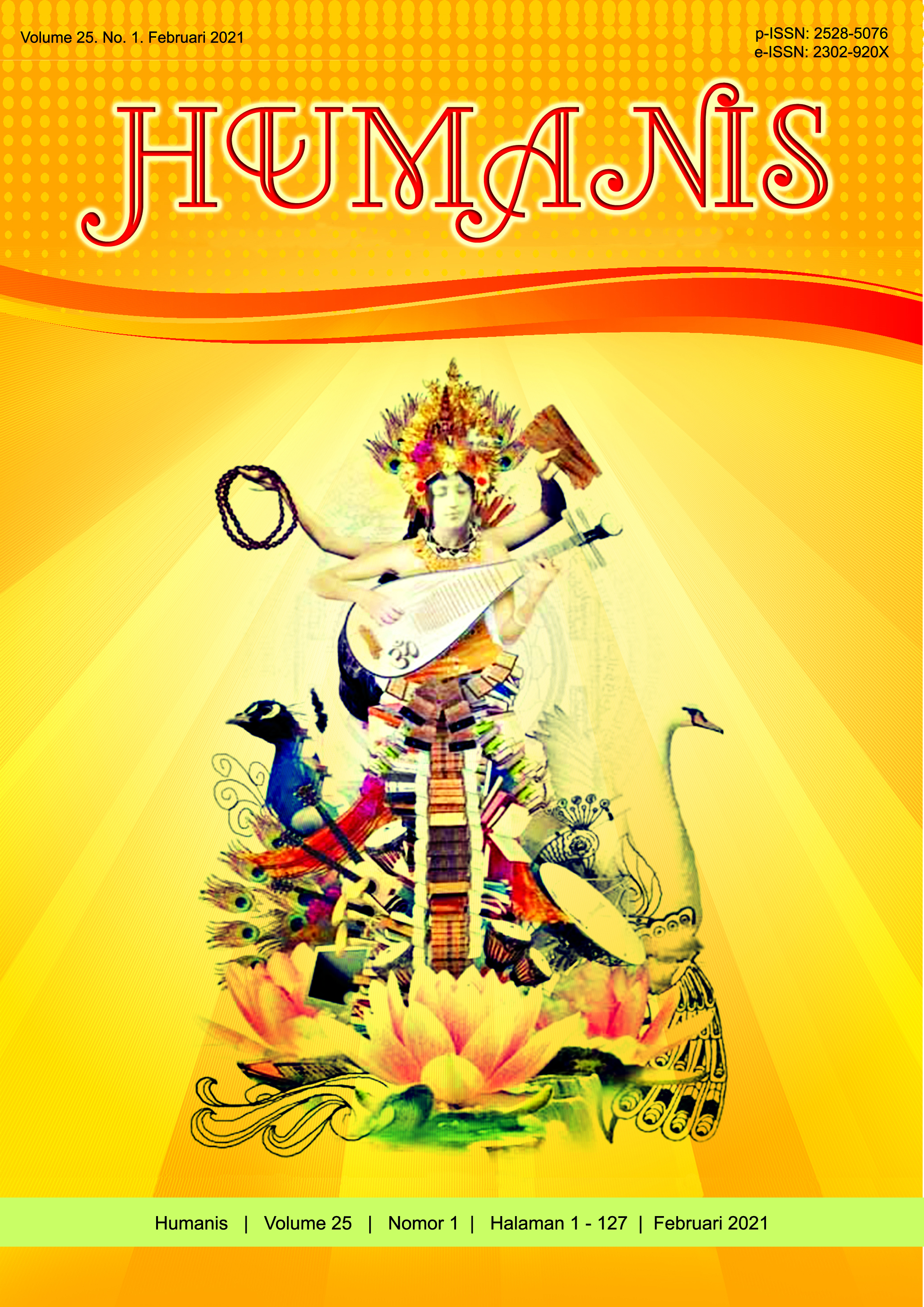Educational Values in Kakawin Brahmânda Purâna
Abstract
Kakawin Brahmândha Purâna or Kakawin Pretu Wijaya is a kakawin which contains the story of a very cruel king named King Wena. His government was featured by cruelties. The advices given by his ancestors and the priests were always neglected. He defied every religious teaching introduced to him. When the priests advised him, he challenged them instead of listening to them. As a result, a war took place between the priests and king Wena. When the priests were pressured, they hit his arm, causing it be pregnant and a son named Pretu was born. Therefore, his full name was P?tuWijaya, who was then crowned the king. The story was continued with the names of highly beautiful mounts, lakes and places located in the territory of Baratawarsa The study was intended to spread the educational values which the kakawin contains which can be used as guidance by the young generation. Apart from that, the study was also intended to document the story. The theory used in the current study is the theory of literary deconstruction developed by J. Darrida. The research method used included data collection, data analysis and the descriptive presentation of the result of data analysis. The educational values which were found in Kakawin Brahmana Purana are as follows: the educational value of morality, the religious educational value, and the educational value of unity and oneness. It was composed in the era of the reign of I Dewa Agung Istri Kania, who governed the Klungkung kingdom. The fact which showed this was that the queen, Sri Prakerti Wiryya, who was old, is mentioned in the kakawin.
Downloads
References
Aminudin. (1990). Semantik Pengantar Studi Tentang Makna. Bandung: Sinar Baru.
Amir, Adriyetti. (2013). Sastra Lisan. Yogyakarta: Penerbit Andi.
Anwar, Ahyar. (2010). Teori Sosial Sastra. Yogyakarta: Penerbit Ombak.
Arikunto, Suharsini. (1998). Prosedur Penelitian: Suatu Pendekatan Praktek. Jakarta: Rineka Cipta.
ATL. (2009). “Pedoman Kajian Tradisi Lisan (KTL) Sebagai Kekuatan Kultural”. Jakarta: Direktorat Jenderal Pendidikan Tinggi Departemen Pendidikan Nasional.
Becker, Megan – Leckrone. (2005). Teori Sastra & Julia Kristeva (Terjemahan Sunaryono Basuki Ks). Denpasar: CV Bali Media Adikarsa.
Berger, Arthur Asa. (2010). Pengantar Semiotika, Tanda-Tanda dalam Kebudayaan Kontemporer (Penerjemah: M Dwi Marianto). Yogyakarta: Tiara Wacana.
Hoed. Benny H. (2011). Semiotik & Dinamika Sosial Budaya. Depok: Komunitas Bambu.
Mahsun, M.S. (2005). Metode Penelitian Bahasa: Tahapan strategi, metode, dan tekniknya. Jakarta: PT. Rajagrafindo Persada.
Rass, J.J. (2014). Masyarakat dan Kesusastraan Jawa. Jakarta: Yayasan Pustaka Obor Indonesia,
Reffaterre, Michael. (1979). Semiotic of Poetry. Bloomington and London: Indiana University Press.
Sukartha, I Nyoman. (1991). “Kakawin Brahmanda Purana, Teks dan Terjemahan”. Denpasar: LPPM Unud.
Teeuw, A. (1983). Membaca dan Menilai Sastra. Jakarta: Pt. Gramedia.
Teeuw, A. (1988). Sastra dan Ilmu Sastra, Pengantar Teori Sastra. Jakarta: Pustaka Jaya.
Zoetmulder, P.J. (1983). Kalangwan, Sastra Jawa Kuna Selayang Pandang. Jakarta: Djambatan.


















